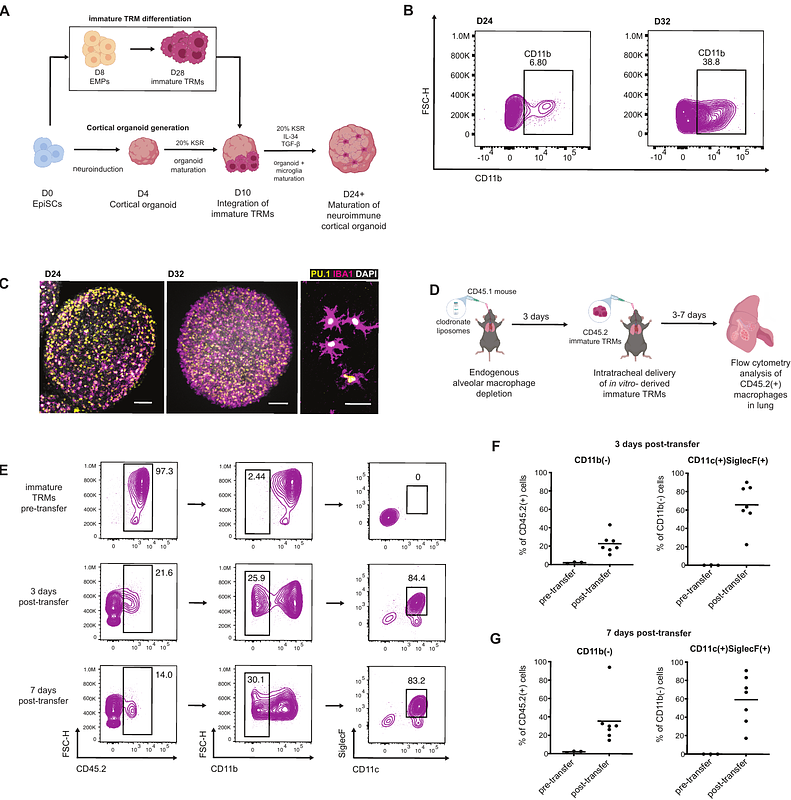Modeling tissue-resident macrophage development from mouse pluripotent stem cells

Modeling tissue-resident macrophage development from mouse pluripotent stem cells
Baako, A. K.; Vijayakumar, R.; Medina-Cano, D.; Wang, Z.; Romero-Pichardo, J.; Fadojutimi, K.; Do, S. C.; Lin, Y.; Islam, M. T.; Dixit, S.; Trzeciak, A.; Perry, J. S. A.; Vierbuchen, T.
AbstractTissue-resident macrophages (TRMs) are innate immune cells that participate in tissue development, homeostasis, and immune surveillance. Extensive efforts have been made to recapitulate TRM development from pluripotent stem cells (PSCs) in vitro to study molecular and cellular mechanisms of TRM development and to create cellular models of disease. However, available PSC models of mouse TRM development exhibit low overall efficiencies of TRM generation, generate heterogeneous off-target populations, and rely upon undefined media components, thus limiting their reproducibility, scalability, and widespread application as an experimental platform for TRM biology. To address these important limitations, we developed an efficient and reproducible protocol to faithfully recapitulate the stepwise differentiation of mouse PSCs (epiblast stem cells) into unspecialized, proliferative TRMs through the pro-definitive hematopoietic program under defined conditions. These immature TRMs can stably integrate into developing mouse neural organoids in vitro and acquire features of microglia. In addition, immature TRMs can stably engraft into the lung niche in vivo and adopt alveolar macrophage characteristics. This new platform for modeling mouse TRM development represents a powerful experimental model system for studying TRM function and dysfunction in development and disease.